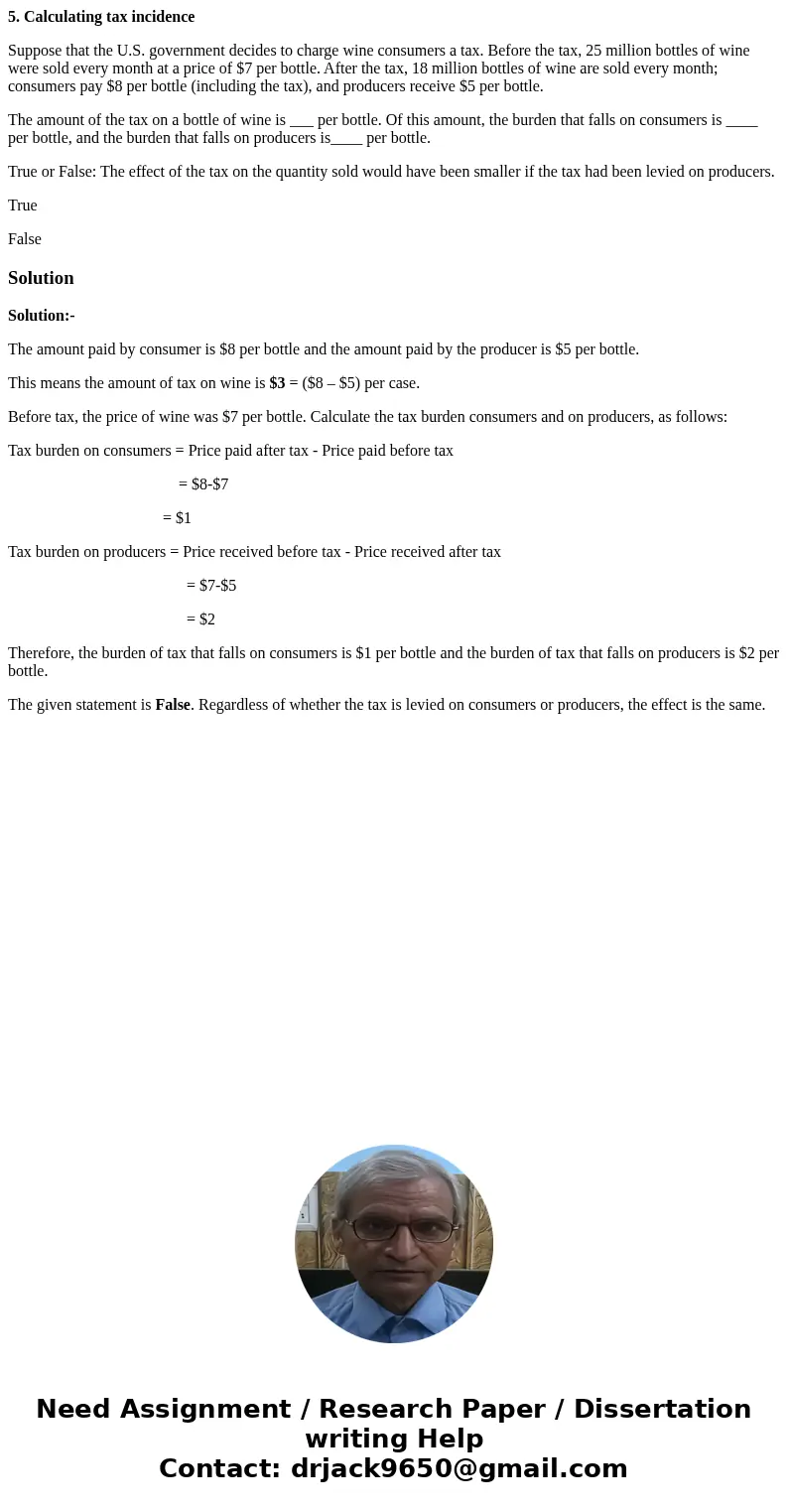5 Calculating tax incidence Suppose that the US government d
5. Calculating tax incidence
Suppose that the U.S. government decides to charge wine consumers a tax. Before the tax, 25 million bottles of wine were sold every month at a price of $7 per bottle. After the tax, 18 million bottles of wine are sold every month; consumers pay $8 per bottle (including the tax), and producers receive $5 per bottle.
The amount of the tax on a bottle of wine is ___ per bottle. Of this amount, the burden that falls on consumers is ____ per bottle, and the burden that falls on producers is____ per bottle.
True or False: The effect of the tax on the quantity sold would have been smaller if the tax had been levied on producers.
True
False
Solution
Solution:-
The amount paid by consumer is $8 per bottle and the amount paid by the producer is $5 per bottle.
This means the amount of tax on wine is $3 = ($8 – $5) per case.
Before tax, the price of wine was $7 per bottle. Calculate the tax burden consumers and on producers, as follows:
Tax burden on consumers = Price paid after tax - Price paid before tax
= $8-$7
= $1
Tax burden on producers = Price received before tax - Price received after tax
= $7-$5
= $2
Therefore, the burden of tax that falls on consumers is $1 per bottle and the burden of tax that falls on producers is $2 per bottle.
The given statement is False. Regardless of whether the tax is levied on consumers or producers, the effect is the same.

 Homework Sourse
Homework Sourse